Musical Instruments in Dante’s Commedia: A Visual and Acoustic Journey
Francesco Ciabattoni (2019)
Inferno
Even though Nimrod’s horn in Inferno 31 is the only instrument in the Commedia that is present in the narration and not merely mentioned in a figure of speech, the most frequently referenced musical instrument in Dante’s underworld is the trumpet. There are three occurrences of the trumpet in Inferno, the first of which is in Inferno 6, when the Florentine Ciacco (a name that might translate as “pig” in Dante’s vernacular) falls into a silent trance after an ominous conversation with the pilgrim. Virgil announces that the glutton’s soul will not awake until the trumpets of Doomsday sound:
… «Più non si desta
di qua dal suon de l’angelica tromba,
quando verrà la nimica podesta
ciascun rivederà la trista tomba,
ripiglierà sua carne e sua figura,
udirà quel ch’in etterno rimbomba».
(Inf. 6.94-99)
(‘He’ll rise no more / until the blast of the angelic trumpet / upon the coming of the hostile Judge: / each one shall see his sorry tomb again / and once again take on his flesh and form, / and hear what shall resound eternally.’)
The reference is of course to the Last Judgment, when the voice of God will announce the verdict, underscored by the sound of trumpets, as we read in the Gospel of Matthew: “Et mittet angelos suos cum tuba et voce magna, et congregabunt electos eius a quattuor ventis” (Matth. 24, 30-31) (“And he shall send his angels with a trumpet, and a great voice: and they shall gather together his elect from the four winds”).
The trumpet is invoked again in Inferno 19 when Dante inveighs against the clergy’s nepotism and corruption. As the pilgrim bends over to scold Nicholas III, a pope who made commerce of divine offices, his harsh words express deep indignation. Dante’s poetic vengeance is aimed also, and perhaps especially, at Boniface VIII and Clement V, two popes whose political machinations resulted in the defeat of the White Guelphs (Dante’s own party) and ultimately the poet’s exile. Thus, the trumpet is here deployed as a sign of moral and divine authority. The poet must override, through the force of sheer poetic invention, the authority of God’s ministers on earth:
O Simon mago, o miseri seguaci
che le cose di Dio, che di bontate
deon essere spose, e voi rapaci
per oro e per argento avolterate,
or convien che per voi suoni la tromba,
però che ne la terza bolgia state.
(Inf. 19.1-6)
(O Simon Magus! O his sad disciples! / Rapacious ones, who take the things of God, / that ought to be the brides of Righteousness, / and make them fornicate for gold and silver! / The time has come to let the trumpet sound / for you; your place is here in this third pouch.)
But the most famous trumpet of the Commedia sounds out when officer Barbariccia musters his squad of devils:
Per l’argine sinistro volta dienno;
ma prima avea ciascun la lingua stretta
coi denti, verso lor duca, per cenno;
ed elli avea del cul fatto trombetta.
(Inferno 21.136-39)
(They turned around along the left hand bank: / but first each pressed his tongue between his teeth / as signal for their leader, Barbariccia. / And he had made a trumpet of his ass.)
As a fallen angel who had once sung in heaven, Barbariccia’s flatulence is a signal meant to master the squad of devils that Malacoda, devil-in-chief of Malebolge, has assigned to escort Virgil and a reluctant Dante. This degraded musical/military sound is a parodic reversal of angelic singing: the devils are, after all, fallen angels whose brethren perform ceaselessly in heaven.
More war instruments resound in the gloomy atmosphere of Inferno, as seems appropriate within an environment that should not have peace. When Dante recalls his 1289 campaign against the Ghibelline city of Arezzo, at the beginning of Inferno 22, he mixes the sounds of drums, trumpets, and bells, comparing Barbariccia’s fart to an “outlandish fanfare”:
Io vidi già cavalier muover campo,
e cominciare stormo e far lor mostra,
e talvolta partir per loro scampo;
corridor vidi per la terra vostra,
o Aretini, e vidi gir gualdane,
fedir torneamenti e correr giostra;
quando con trombe, e quando con campane,
con tamburi e con cenni di castella,
e con cose nostrali e con istrane;
né già con sì diversa cennamella
cavalier vidi muover né pedoni,
né nave a segno di terra o di stella.
(Inf. 22.1-12)
(Before this I’ve seen horsemen start to march / and open the assault and muster ranks / and seen them, too, at times beat their retreat; / and on your land, o Aretines, I’ve seen / rangers and raiding parties galloping, / the clash of tournaments, the rush of jousts, / now done with trumpets, now with bells, and now / with drums, and now with signs from castle walls, / with native things and with imported ware; / but never yet have I seen horsemen or / seen infantry or ship that sails by signal / of land or star move to so strange a bugle!)
The Italian word cennamella indicates an instrument called shawm in English, a reed instrument with vent holes and a flared end that is considered the predecessor of the modern oboe:
Shawms were used mostly for military purposes, to rally troops in battle, and trumpets were similarly sounded to signal during warfare. Although the shawm and the trumpet may have acquired social prestige in later centuries, their status in the Middle Ages was still quite base, and their melodic capabilities limited.
Master Adam, in Inferno 30, looks so deformed by the illness with which he is being punished for falsifying the golden Florin that his bloated belly is compared to a lute:
Io vidi un, fatto a guisa di lëuto,
pur ch’elli avesse avuta l’anguinaia
tronca da l’altro che l’uomo ha forcuto.
(Inf. 30.49–51)
(I saw one who’d be fashioned like a lute / if he had only had his groin cut off / from that part of his body where it forks.)
Adam’s belly, however, sounds out like a drum when another sinner (Sinon, a Trojan who had impersonated a Greek in order to enter the city) strikes him!
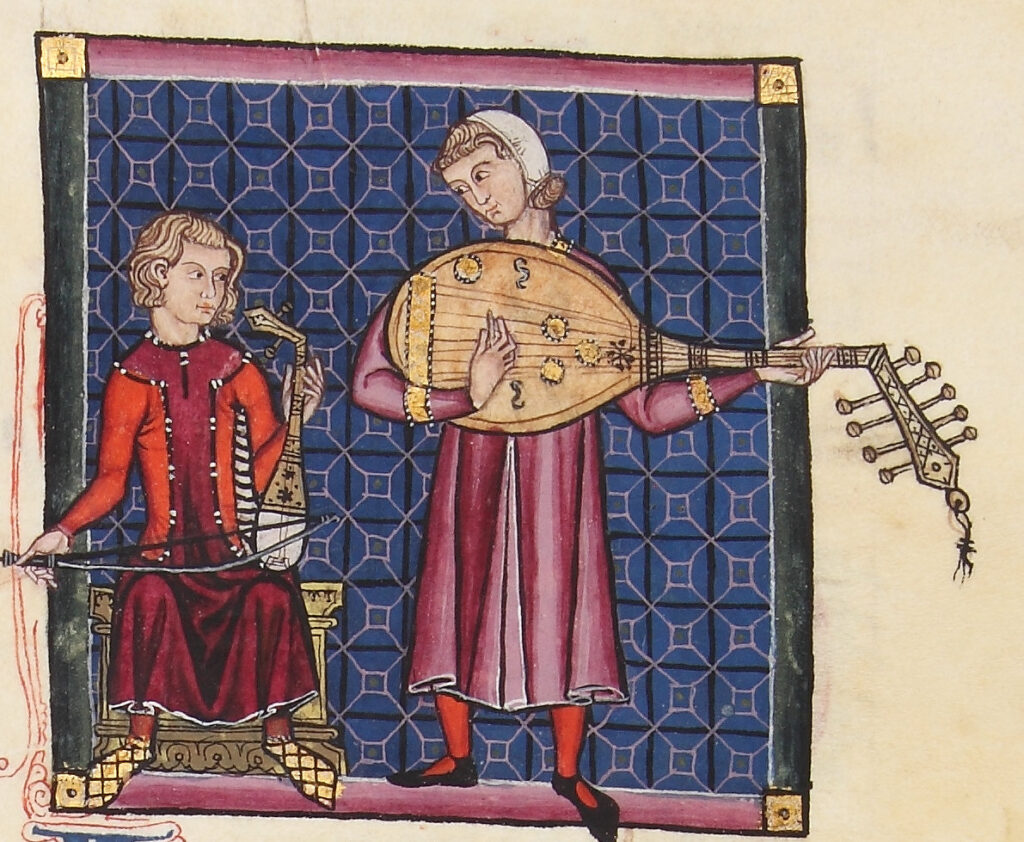
A rebab (or rebec) player, on the left, and an oud player, on the right, Cantigas de Santa Maria, J.B.2, fol. 162r, Real Biblioteca del Monasterio de El Escorial
The above image shows a rebab (also called rebec) and a large lute, already in the shape of European instruments (Montagu 31-33). The European lute is a grandchild of the Arab oud, which entered Europe in the ninth century, when the Moors occupied Spain. The above image is from the lavishly illustrated Escorial codex of the Cantigas de Santa Maria, a Spanish-Portuguese royal music manuscript dating to 1260-80. In 1260, Brunetto Latini, who was to become Dante’s grammar teacher in Florence, had traveled to the court of Alfonso X of Castile.
That Dante compares Adam’s body to a lute should not come as a surprise: the lute’s associations with the human body are strong and date back to its invention, as an old Arab legend links the invention of the lute to a dead human body. According to the legend, Lamak, a grandson of Adam (the original first man), fashioned the first lute from the dead body of his son; the leg and foot became the bent peg palette of the instrument. The lute ascended to high status only decades later, and not without some lasting ambivalence: in Hieronymus Bosch’s The Garden of Earthly Delights (ca. 1500), a lute and a bagpipe are crossbred with a harp to express the discord of Hell. Human bodies are tied to their strings in positions reminiscent of crucifixion.
In Dante’s representation of the lute, a bent, disfigured body is the center of poetic attention: the falsifier Master Adam, having coined false florins, is punished here with never-ending dropsy and a scorching thirst. His body, horribly bloated because of the sickness, would look just like a lute, were it not for the legs.
As noted earlier, the horn sounded by Nimrod is the only actual music instrument in the Commedia. The horn is connoted by the same disproportioned ugliness as the biblical king who was responsible for building the tower of Babel and the consequent confusion of languages:
ma io senti’ sonare un alto corno,
tanto ch’avrebbe ogne tuon fatto fioco (Inf. 31.12-13)
(but then I heard a bugle blast so strong, / it would have made a thunder clap seem faint)
Purgatorio
The second cantica is filled with singing: many repenting souls intone psalms, angels sing beatitudes from the gospel of Matthew, and Dante’s old friend, Casella, even sings the poet’s own song “Amor che nella mente mi ragiona”. There is, however, one remarkable simile in Purgatorio 9 in which a musical instrument is evoked: as the angel of purgatory authorizes the pilgrim to enter the realm of purification, a large church organ resounds while a voice sings “Te Deum”. These lines describe the screeching gates of purgatory as they open and pave the way for the wayfarers’ entrance into purgatory proper:
Tale imagine a punto mi rendea
ciò ch’io udiva, qual prender si suole
quando a cantar con organi si stea;
ch’or sì or no s’intendon le parole
(Purg. 9.142–45)
(And what I heard gave me the very same / impression one is used to getting when / one hears a song accompanied by organ, / and now the words are clear and now are lost.)
That the word “organi” in line 144 actually indicates a pipe organ and not vocal polyphony (as it sometimes did in Latin) is proven by the lexical pattern that Dante employs to describe the gate’s loud and disconcerting sound. Many words, as well as the governing simile of the roaring thunder, are clearly culled from monks’ descriptions of church organs, such as Notker Balbulus’s De gestis Caroli Magni imperatoris, Aelred of Rievaulx’s Speculum charitatis or Wulstan’s Vita sancti Swithuni (Ciabattoni, “‘Temprando col dolce l’acerbo’” 112, 116). Here is how Notker, a music-versed monk from St. Gall, speaks of the pipe organ that the Byzantine delegation gifted (or perhaps reproduced) from a model for Charlemagne in 812 in Aachen:
Organum praestantissimum, quod doliis ex aere conflatis follibusque taurinis per fistulas aereas mire perflanctibus rugitum quidem tonitrui boatu, garrulitatem vero lyrae, vel cymbali dulcedine[m] coaequabat.
(Notkerus Balbulus, De Gestis Caroli Magni, II.X, quoted from Peter Williams, The Organ in Western Culture, 750-1250, Cambridge UP, 1993, pp. 142-43)
[An outstanding organ, with vessels cast in bronze and bellows of bullhide blowing magnificently through the bronze pipes, matched the very roar of the crash of thunder, the chattering of the lyre, or the sweetness of bells]
Large pipe organs in churches were not common in the Middle Ages, however those that existed were impressive and exceptional instruments, such as the one installed in Florence’s Santissima Annunziata in 1299 (Moretti 51-52). Images of air organs are found in old psalters:
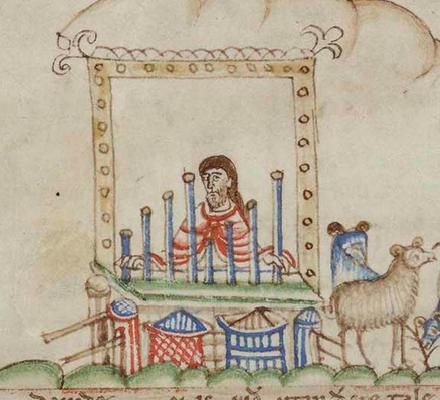
Organ, Eadwine Psalter (ca. 1150), Cambridge MS R.17.1, Folio 281r, Trinity College, Cambridge University

Organ, Eadwine Psalter (ca. 1150), Cambridge MS R.17.1, Folio 261v, Trinity College, Cambridge University
The oldest known organ was found in the ancient roman settlement of Aquincum, near Budapest, and dates back to the third century C.E.:
The plate reads: “Gaius Julius Viatorinus, Decurio Coloniae Aquinci Aedilicius, Praefectus Collegi Centonanorium, Hydram Collegio Supra Scripto de suo donum dedit Modesto et Probo Consulibus” [Gaius Julius Viatorinus, Decurion of the colony of Aquincum, Prefect of the Recruiters’ College, gave this organ to the above said college when Modestus and Probus were consuls].
Paradiso
The third cantica of Dante’s Commedia displays a wealth of references to vocal music, all of supernatural quality, often so beautiful that they cannot be remembered (“canti / da mia memoria labili e caduci” [songs / that slip, and fade, and fall from memory] Par. 20.11-12) and mostly polyphonic setting (“Diverse voci fanno dolci note; / così diversi scanni in nostra vita / rendon dolce armonia tra queste rote” [‘Differing voices make sweet music./ Just so our differing ranks in this our life create sweet harmony among these wheels] Par. 6.124-26). Polyphonic singing in paradise is employed to signify spiritual and political reconciliation, concord between opposites, or “to accompany the more mystical, mysterious steps of the pilgrim’s ascent” into God’s realm (Ciabattoni, Dante’s Journey to Polyphony, 155).
But when it comes to musical instruments, it is the chordophones that Dante favors in heaven. The cetra, or cithara (Par. 20), the harp, and the lyre are instruments that, while technically different from one another, all shared a symbolical association with David’s psaltery, spiritual healing and divine musicianship, as had been established by the Fathers of the Church (van Schaik, The Harp in the Middle Ages, 12, 37; Mathiesen 269; Ciabattoni, Dante’s Journey to Polyphony, 189).
E come suono al collo de la cetra
prende sua forma, e sì com’ al pertugio
de la sampogna vento che penètra,
(Par. 20.22-24)
(Even as sound takes shape at the lute’s neck, / and even as the wind that penetrates / the blow—hole of the bagpipe, so—with no / delay—that murmur of the Eagle rose / straight up, directly through its neck as if / its neck were hollow; and that murmuring)
This passage, in which a metaphor expresses the harmony of six voices (David, Trajan, Hezekiah, Constantine, William the Good, and Ripheus) in one, brings together the cetra and the sampogna (lat. symphonia), an instrument similar to the bagpipe; it conveys the passage of air as in the divine eagle’s voice. The eagle speaks in the voice of a sextuple plurality: the six heroes of divine justice (we are in the heaven of Jupiter, god of justice) speak collectively as one, in a pattern of six segments, each six lines long, for a total of thirty-six lines (Hollander, commentary ad loc.).
The cetra, a string instrument which was associated in antiquity with Apollo or David, seems to have caused some confusion among early commentators, who gloss it as “cetera, chitarra, liuto o viola etc.” (Jacopo della Lana), or “chitarra” (Francesco Buti). Emanuel Winternitz (Musical Instruments 57-58) traces this necked cetra to a cittern, a forefather of today’s guitar. All the different names (cithara, cetera/cetra, cittern, citole, guitar, chitarra) are obviously related etymologically, as are the different versions of this plucked chordophone with a neck (Wright 272). The problem is that neither Apollo’s cetra nor David’s psaltery had a neck, but rather looked more like a harp than a guitar:
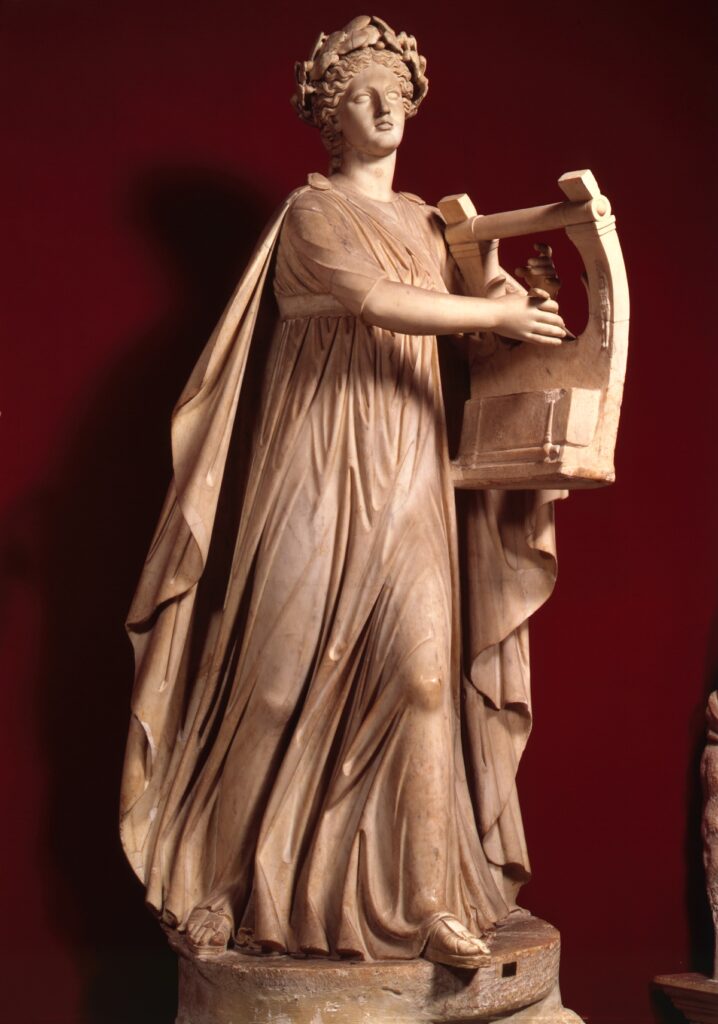
Apollo Citharedos, Roman Statue, 2nd Century C.E., Museo Pio Clementino, Inventory no. 310, Vatican Museums
The ancient Roman statue above portrays the God of music playing a cithara (whence the moniker “citharedos”), which looks very similar to a harp or a psaltery. A Davidic psaltery is shown, in a famous illumination of musical instruments, in a mid-fourteenth century manuscript containing Boethius’ De musica:
And yet, iconographies of necked chordophones looking like a lute or a modern guitar are sometimes found in medieval psalteries, such as this beautiful illumination from the Stuttgart Psalter:
The text of Psalm 91 mentions both the psaltery and the cithara, but the instrument in the above image does not look like either, so it could be a necked variant of either one. However, the psaltery is said to have ten strings (decacordo salterio), and the instrument in the Stuttgart Psalter illumination seems to have only six strings, so it must be a six-string necked cithara. The number of strings on a cithara could vary, so it is probably a mere coincidence that this image shows six strings, though it seems to fit Dante’s description of a cetra in Par. 20 quite precisely!
A lyre is mentioned in Paradiso 15 when the blessed theologians rest their singing, as if directed by the hand of a deus musicus:
Benigna volontade in che si liqua
sempre l’amor che drittamente spira,
come cupidità fa nella iniqua,
silenzio puose a quella dolce lira,
e fece quïetar le sante corde
che la destra del cielo allenta e tira.
(Par. 15.1–6)
(Generous will—in which is manifest / always the love that breathes toward righteousness, / as in contorted will is greediness— / imposing silence on that gentle lyre, / brought quiet to the consecrated chords / that Heaven’s right hand slackens and draws taut.)
One should keep in mind that harp, lyre and cithara are all variants of David’s psaltery, whose salvific importance was such that a book of the Bible was named after it. More chordophones are evoked at the end of the Paradiso 14, when the wise men perform their dance while sounding like a harp or a viol whose beautiful chords are set to unintelligible lyrics (sanza intender l’inno):
E come giga e arpa, in tempra tesa
di molte corde, fa dolce tintinno
a tal da cui la nota non è intesa,
così da’ lumi che lì m’apparinno
s’accogliea per la croce una melode
che mi rapiva, sanza intender l’inno.
(Par. 14.118–23)
(And just as harp and viol, whose many chords / are tempered, taut, produce sweet harmony / although each single note is not distinct, / so, from the lights that then appeared to me, / out from that cross there spread a melody / that held me rapt, although I could not tell.)
The word tempra (harmony) indicates a polyphonic mélange of sounds in the voices of these divine singers (Ciabattoni, Dante’s Journey to Polyphony, 165), so this concert is really supposed to be imagined as a vocal one, though the poet chooses to use similes of string instruments to evoke the paradisiac quality of the musical experience. The aforementioned instruments are fittingly those with a heavenly symbology: the harp, the lyre, the cithara, but also the sampogna and the viol. Patristic literature associated the harp, the lyre and cithara with David and divine musicianship. These Christian writers explained the cithara’s divine powers on the basis of its resemblance to the cross. The great significance of the cithara is reflected in both the Commedia and the Convivio (I.ix 2-3).

Musical instruments. Boethius, on top, holds the psaltery like a cross, MS V.A. 14, folio 47, Biblioteca Nazionale di Napoli.
–Francesco Ciabattoni
[Author’s Note: For Dante’s text, I follow the 1967 Petrocchi edition. For the English translation, I have used the Allen Mandelbaum translation (1984), exclusively available on Digital Dante.]
Bibliography
Alighieri, Dante, Il Convivio = The Banquet. Translated by Richard Lansing, New York: Garland, 1990.
—. Convivio, edited by Franca Brambilla Ageno, Florence: Le Lettere, 1995.
—. Inferno, edited and translated by Robert and Jean Hollander, New York: Doubleday, 2000.
—. Purgatorio, edited and translated by Robert and Jean Hollander, New York: Doubleday, 2003.
—. Paradiso, edited and translated by Robert and Jean Hollander, New York: Doubleday, 2007.
Bowles, Edmund A., “Were Musical Instruments used in the Liturgical Service During the Middle Ages?” in The Galpin Society Journal, 10 (1957), pp. 40-56.
Ciabattoni, Francesco. Dante’s Journey to Polyphony, Toronto: The University of Toronto Press, 2010.
—. “Il dolce ruggito del tuono: per un’interpretazione di Purgatorio IX, 144 e Paradiso XVII,” in Dante e la musica, 2 (2015), pp. 65-86.
—. “Salmodia, parodia e perversione musicale,” in Nel 750° anniversario della nascita di Dante Alighieri. Letteratura e Musica del Duecento e del Trecento, ed. Paola Benigni in Quaderni della Fondazione Carlo Gesualdo (Studi e testi), 2016, pp. 93-104.
Haley, Kathleen, “The Trumpets of Dante’s Inferno” in Comedy in comparative literature : essays on Dante, Hoffman, Nietzsche, Wharton, Borges, and Cabrera Infante, ed. David Gallagher; Manfred Pfister Publisher: Lewiston, NY: Edwin Mellen Press, 2010, pp. 13-28.
Heilbronn, Denise, “Master Adam and the Fat-Bellied Lute (Inf. XXX),” Dante Studies, 101 (1983), pp. 51-65.
Holsinger Bruce W., Music, body, and desire in medieval culture: Hildegard of Bingen to Chaucer, Stanford: Stanford UP, 2001
Iannucci, Amilcare, “Musical Imagery in the Mastro Adamo Episode,” in Da una riva e dall’altra, studi in onore di Antonio D’Andrea, Firenze: Cadmo, 1995, pp. 103-18.
Isidore of Seville, Sententiae de musica. Scriptores ecclesiastici de musica sacra potissimum, 3 vols., ed. Martin Gerbert, St. Blaise: Typis San-Blasianis, 1784; reprint ed., Hildesheim: Olms, 1963.
Mathiesen, Thomas J., Apollo’s Lyre: Greek Music and Music Theory in Antiquity and the Middle Ages, Lincoln: University of Nebraska Press, 1999.
Montagu, Jeremy, The World of Medieval & Renaissance Musical Instruments, Newton Abbot: David & Charles, 1976.
van Schaik, Martin, The Harp in the Middle Ages: The Symbolism of a Musical Instrument, Amsterdam & Atlanta: Rodopi, 1992.
Winternitz, Emanuel. Musical Instruments and Their Symbolism in Western Art. Studies in Musical Iconology, Yale University Press, 1979.
Wright, Laurence, “The Medieval Gittern and Citole: A Case of Mistaken Identity” in Instruments and their Music in the Middle Ages, ed. Timothy J. McGee, Routledge, 2017, pp. 253-92.
(Recommended Citation: Ciabattoni, Francesco. “Musical Instruments in Dante’s Commedia: A Visual and Acoustic Journey.” Digital Dante. New York, NY: Columbia University Libraries, 2019. https://digitaldante.columbia.edu/sound/ciabattoni-instruments/)

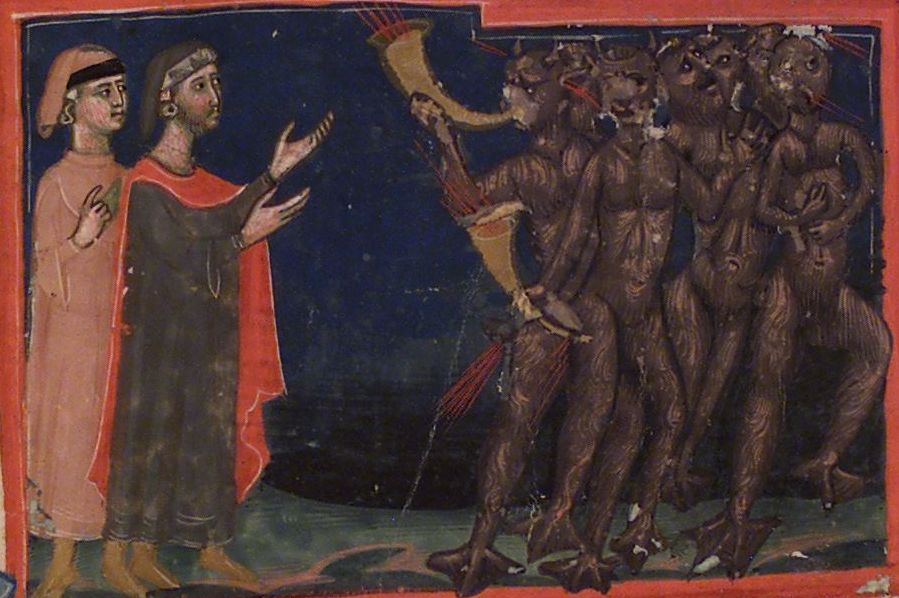
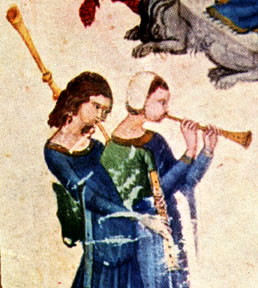
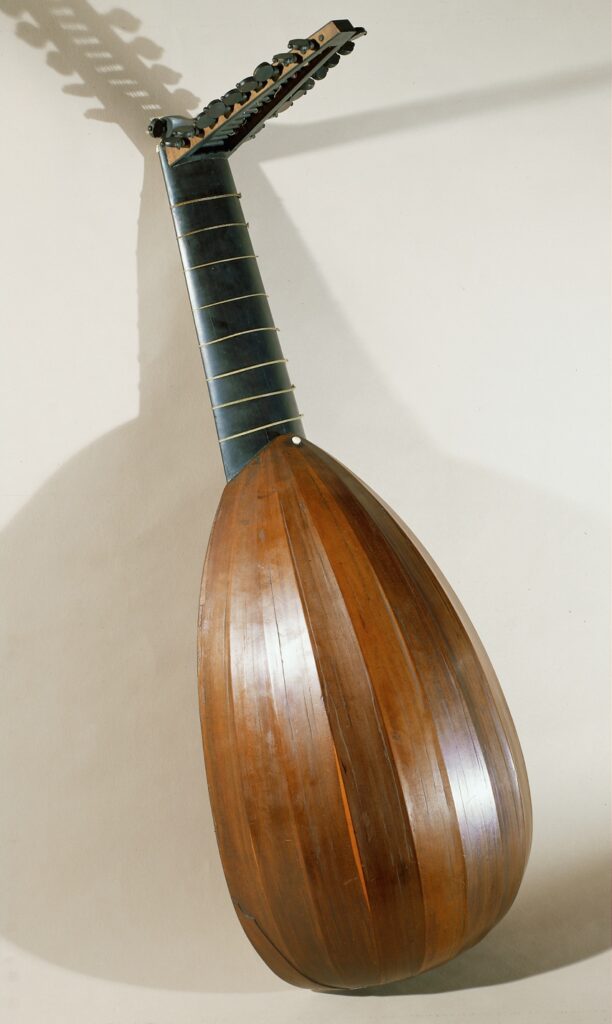
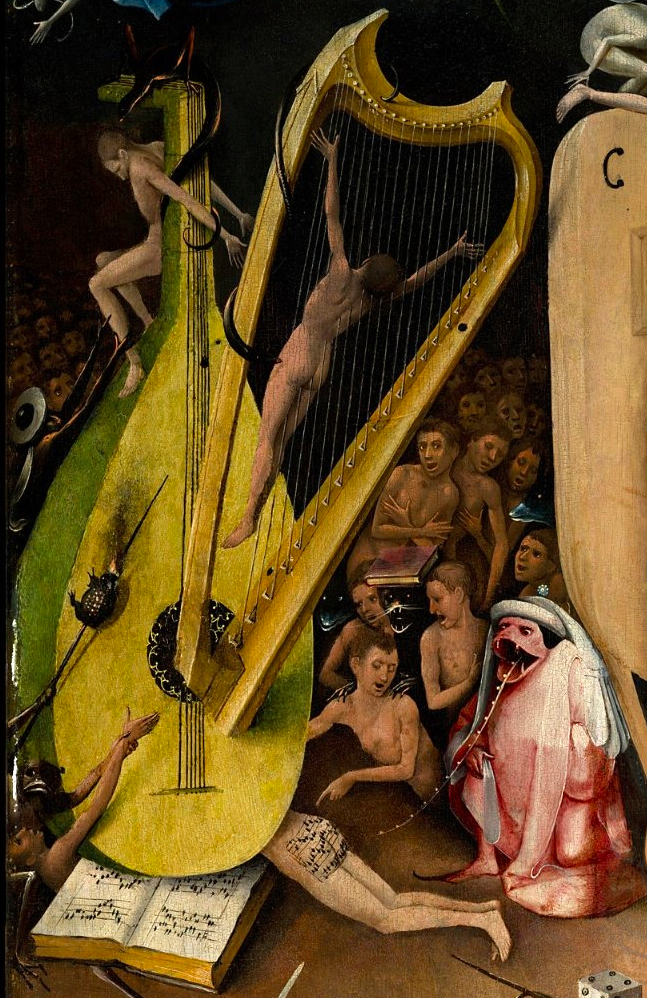



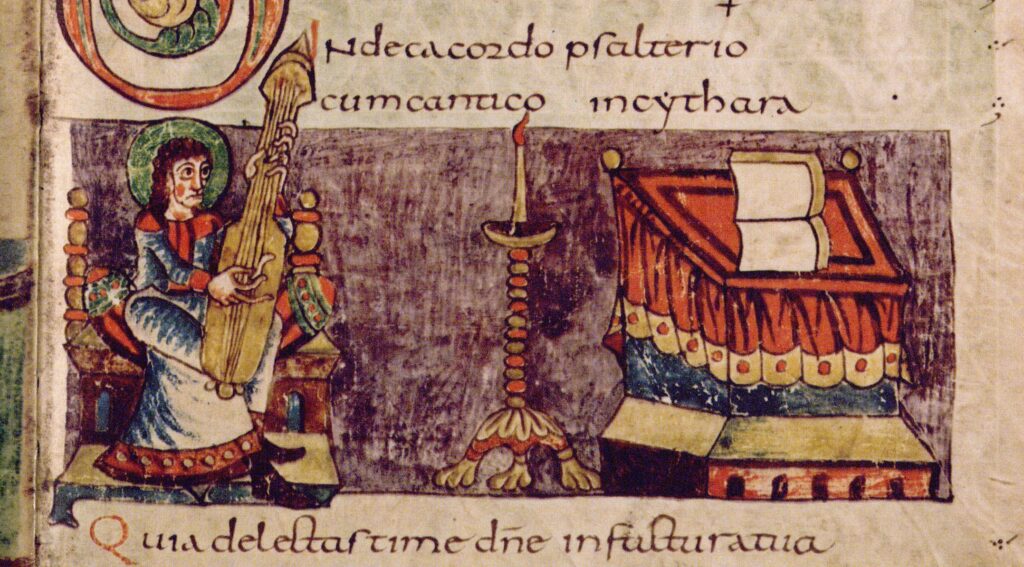
 Return to top
Return to top